2004 Jaguar XKR 4.2 X100 vs. 2002 Chevrolet Corvette C5
Understated supercharged Jaguar meets America’s brash plastic sports car and the result has us… well, surprised if we’re honest.
We compare two V8 performance icons which neatly mixed the old and new.
WORDS & PHOTOGRAPHY PAUL WAGER
TWIN TEST: XKR X100 v CORVETTE C5 Vette Science
If some of our British readers are looking at the incongruous pairing on these pages and judging it to be a somewhat tenuous comparison then yes, I can see where you’re coming from. But think laterally enough and the Corvette C5 and XKR X100 have more in common than you might think.
Both were announced as thoroughly modern designs yet retained elements of their predecessor – the pushrod V8 in the case of GM and the XJ-S platform in the case of Jaguar – and over in the USA there would have been more than a few buyers torn between the homegrown brawn of the Vette and the understated restraint of the Jaguar.
Not too many UK buyers probably lost sleep fretting over a ‘Corvette versus XKR’ decision, but for a brief while the two were in fact on sale here together, albeit the GM car only in left-hand drive. Launched in 1997, the C5 generation Corvette was the first to be properly marketed in Europe – including the UK – and lasted until 2004, meaning it neatly overlapped the X100 XKR.
There’s also another fascinating ‘what if?’ element to the comparison, since the two could very easily have ended up being in-house competitors and it’s entirely possible we could have had a Jaguar coupe powered not by the advanced AJ-V8 but by Chevy’s LS motor.
As Sir John Egan recounts in his biography, the Jaguar board was less than enthused by the Ford deal and at one point was pursuing a joint-venture with General Motors via its German Opel subsidiary. Indeed, the Ford deal at one point was deemed by Dearborn executives to be so precarious that a team of FoMoCo executives was even positioned in a Trollhättan hotel, poised to sign up Saab instead if the Jaguar deal failed.
Back to reality though and the Corvette C5 remains a rare beast on British roads, especially in factory-supplied European form, but we managed to track one down at Stone Cold Classics in Kent, where they seem to find well-preserved survivors like this – and if I tell you that it was sharing showroom space with a pristine Fiat Uno Selecta then that tells you all you need to know. So how do the two stack up together 20 years later?
Jaguar XKR X100
Naturally, as a reader of JW you won’t need chapter and verse on the history of the X100 XKR. Suffice to say that this was a car which was eagerly awaited, the rumours of an ‘F type’ having appeared regularly in the press for years.
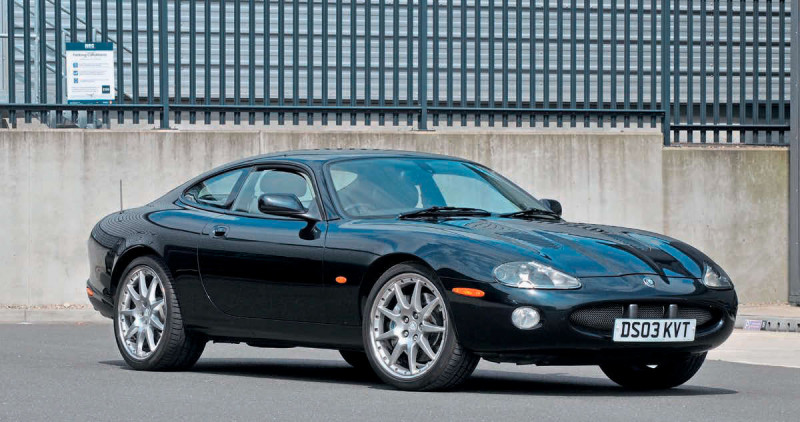
Jaguar had been working on a replacement for the XJ-S for a very long time and among the several false starts was the adventurous XJ41, essentially a coupe derivative of the XJ40 with very ’80s style, turbocharged engine and four-wheel drive. Adventurous it may have been, but it was also costly and thanks to its protracted development, already dated which explain why it was an early casualty of Ford decision-making at Browns Lane.
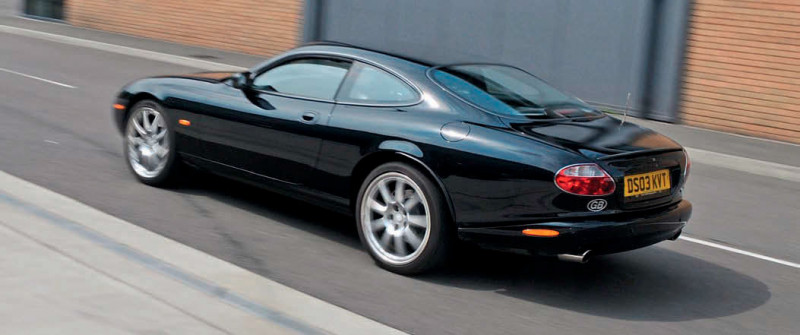
The effort wasn’t all wasted since the styling would eventually appear in production form as the Aston Martin DB7, but back in Coventry the decision was taken to facelift the XJ-S into the XJS to hold the fort while an all-new car was developed.
With the go-ahead given in December 1993 and a launch date set for the 1996 Geneva show (the 35th anniversary of the E-type unveiling at the same venue) the pressure was on, with the V8 engine running early on in XJS development cars.
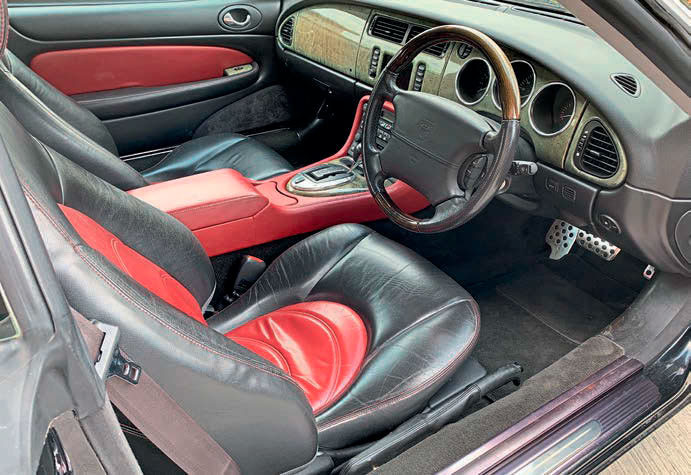
The front suspension used a new design based around unequal length double wishbones carried on a lightweight die-cast aluminium subframe with springs mounted directly to the body and hydraulic mounts between the subframe and engine. At the rear, the long-serving Jaguar independent set-up derived from the XJ saloons was used, with the driveshaft acting as the upper link and the assembly mounted on a rubber-mounted subframe. This was effectively the rear-end set-up as used on the X300 generation of the XJ saloon. The bodyshell used 30 per cent fewer panels than the XJS yet offered torsional rigidity 25 per cent better and in coupe form borrowed a trick from the German makers by raising and lowering the door glass a touch when the handle was operated, in order to slot it under the sealing rubber.
The electronics on the new car used a sophisticated Controller Area Network (CAN Bus) set-up which was capable of extremely fast data communication between the various control modules. The car made its Swiss deadline and was unveiled to a positive reception, with many orders received from potential buyers in advance of its official on-sale date at the British Motor Show later that year.
Launched in 4.0-litre form rated at either 290bhp asXK8 X100 or 370bhp as supercharged XKR, the car gained a capacity boost in 2002 for the 2003 model year to 4.2 litres, in which form it offered a nice round 300bhp or 400bhp and it’s the later car we have here.
Registered in 2003, it wears its 86,000 miles well and with the optional R Performance 20-inch wheels it’s less subtle than the average XKR of this vintage, even if it’s forever overshadowed by the bright yellow Chevy.
It also offers a taste of US-market cabin ambience with the unusual two-tone black and red leather which was originally offered under the name Cranberry and which I’ve always thought seems strangely illconsidered. Otherwise it’s a prime example of the late-model X100 which I’ve always felt rather summed up the positive aspects of the Ford era at Jaguar. Production quality and general fit and finish is light years ahead of the XJ-S and if you’ve ever worked on Jaguars of this generation then you’ll have discovered that behind the scenes they’re very different from the BL-era cars.
Yes, the XK8 has well documented rust issues but find a solid one and the rest of the car will generally be holding up really very well, even neglected examples.
Key to the appeal of the XKR though is the performance and in particular the way it’s delivered. As JW readers will know, the X100 cars were only ever offered in automatic form and it’s the seamless power delivery which sets the XKR apart from pretty much all of its competitors. At idle and trundling around in traffic it’s no more intimidating than a regular XJ saloon, with a discreet exhaust note and an accommodating ride. Yet useful urge is only ever an ankle flex away and if you provoke the car into a full-bore kickdown the result is savage thrust, accompanied by the characteristic supercharger whine. At just 5.2 seconds to 60mph, the XKR is a quick car by any standards, yet is docile enough for everyday life and there are probably countless owners who have owned one for years without realising its tremendous capability.
Yes, the packaging is somewhat compromised and the rear seats which in theory give it an edge over the Corvette are really useful only for coats, dogs and inebriated adults needing a lift home in the rain, but the XKR offers a decent boot and even on the 20-inch rims the ride is GTI-firm rather than the rock solid of a BMW M car. On the subject of which, this particular example features the CATS adaptive dampers of which Jaguar was so proud back in the day, which do their stuff automatically.
On paper, the XKR is beaten in the handling stakes by the Corvette’s transaxle layout which places the gearbox at the rear, yet in practice the Jaguar feels nicely balanced during spirited driving. Yes, it’s naturally nose-heavy and will tend to initial understeer, but in truth it’s more of a fast cross-country tourer than an MX-5 style country lane weapon and it seldom feels out of its depth within the sensible limits of public road driving.

But then as a JW reader, you most likely knew all that already. How does it compare to a plastic-bodied sports car from Kentucky?
Two-tone leather was a factory option. Big brakes and 20-inchwheels are R Performance items.
TECHNICAL DATA FILE 2004 Jaguar XKR 4.2 X100
- Engine 4196cc
- Max Power 390bhp at 6100rpm
- Max Torque 399lb.ft at 3500rpm
- 0-60mph 5.2secs
- Top speed 155mph (limited)
- Economy 25mpg
- Transmission 5-spd auto
Chevrolet Corvette C5
Like the XK8, the Corvette C5 was a supposedly all-new product beset with budget constraints which forced the recycling of at least some hand-me-down componentry. In this case, the steel tube-framed chassis and the composite panels fixed to it were all new, but GM’s precarious financial position in the mid ’90s meant an all-new powerplant was out of the question.
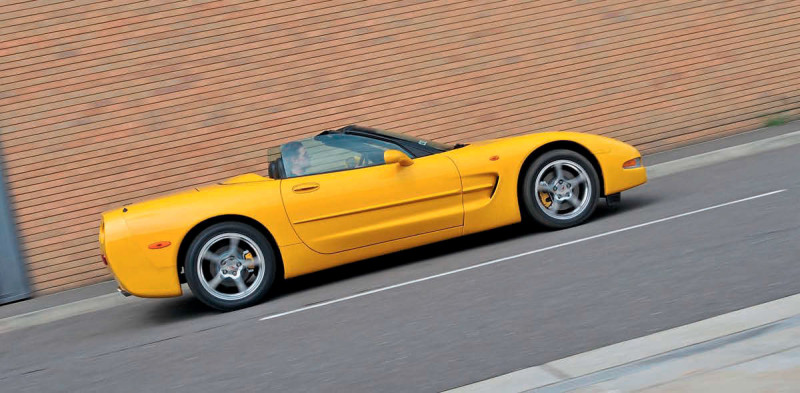
Instead, the fifth-generation Corvette made do with the small-block Chevy, but dig deeper and the engineering which went into updating it makes you wonder if a ground-up design wouldn’t have been cheaper. For starters, the block was recast in aluminium instead of iron, while the intakes were redesigned for equal-length straight ports and the inlet manifolding is all composite. The two-valve pushrod layout remained, but the 5.7-litre motor was redlined at 6000rpm which is identical to the smaller four-valve Jaguar engine. Elsewhere, the big news for the fifth generation was the adoption of a rear-mounted transaxle gearbox, providing a nicely balanced chassis in the finest European tradition.
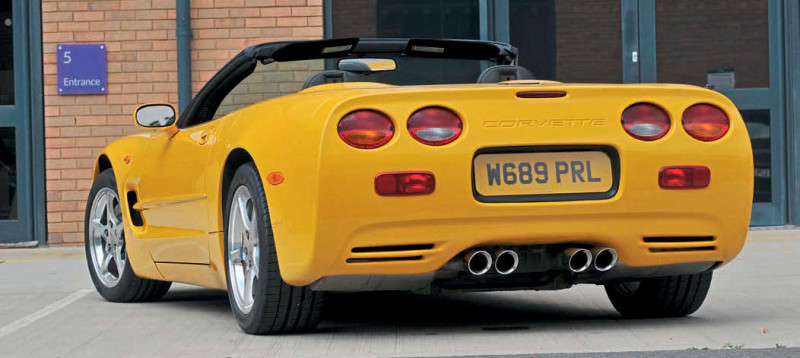
Although tradition went out of the window in the suspension department, where the Corvette is quite unlike any European competitor. The Vette uses wishbones all round, but instead of coil springs, you find a transverse aluminium spring at both ends which isn’t entirely unlike a giant leaf spring. This was apparently done in the interests of weight saving and the C5 weighs in at 1471kg which makes it some 300kg lighter than the Jaguar, with a power-to-weight ratio better than the contemporary Porsche 911 Carrera 996.
On the inside, it all seems at first glance rather more racy than the Jaguar’s sober wood and leather, with a wraparound dash festooned with buttons, Corvette-lettered high-back seats and the body-coloured central pillar on this convertible model. Get closer though and the quality is distinctly patchy: some plastics feel reassuringly European-grade solid but others are flimsy beyond belief. The central storage lid for example is some way below early ’90s Renault in quality and genuinely feels as if you could easily snap it off. In general though, it’s not a bad effort and is certainly a pleasant place to be.
Oh and there’s a superb touch in the shape of a head-up display which genuinely does work well enough to be useful and is some way better than an early system I remember being shown at the launch of the BMW 5-Series of similar vintage.
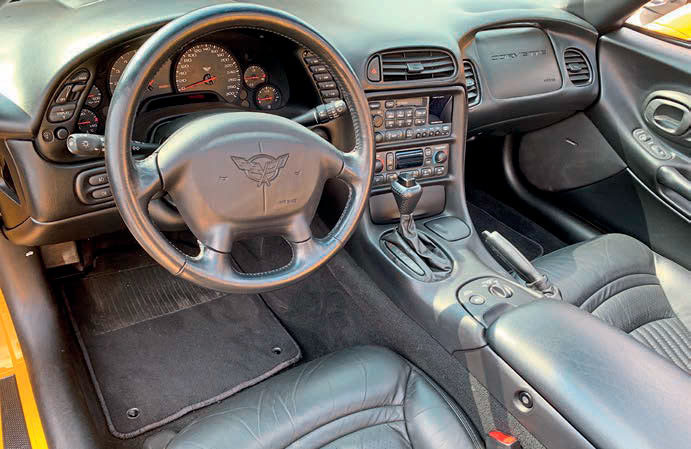
Cars like this aren’t about cabin ambience though and firing up the Corvette immediately tells you what it’s all about. Whereas you sometimes have to doublecheck to see whether the Jaguar is running, there’s none of that with the Corvette which shouts into life with a crackle and a spit from the quad exhausts. Simply put, it sounds glorious, something even the most ardent Jaguar fan would have to admit.
Unlike the XKR, the Corvette was offered in both manual and automatic form, the four-speed self-shifter being naturally the more common and it suits the nature of the car. It’s reassuringly eager from a standstill the step-off just as sharp as the Jaguar’s and the gearbox mapping clearly similar: on a gentle throttle it’s content to amble along on its torque, with even moderate acceleration seldom requiring a downshift. But when you do step on it, the thing really does take off. The blare from the exhausts, the slight shudder from the lightweight bodywork and the sheer pace of the thing are an appealing combination and in a straight line it’s as fast as the XKR, Autocar timing it at 5.7 seconds to 60mph.
But it all falls apart at the first bend, right? Actually, no. The Corvette’s reserves of grip are in fact very high and it does feel as well balanced as the spec sheet tells you it should be, yet on UK roads it’s hard to get the best from it. Even if you’re used to left-hand drive cars here, the Corvette is a big beast and it’s harder to place on the road than the more compact Jaguar, but given sufficient space, it’s incredibly capable. Perhaps surprisingly for a car from a country where ABS didn’t become mandatory until 2013, the Corvette features electronic stability control with an ‘active handling’ system which is essentially what we in Europe know as DSC, where individual wheels are braked to bring the car into line. You’ve also got adjustable dampers offering three settings – all of them pretty crashy by Jaguar standards.
Refinement simply isn’t in the same league as the XKR but that’s to be expected. Indeed, the gearshift was apparently engineered deliberately for a more ‘sporting’ positive feel which means it thumps the changes through compared to the Mercedes box in the Jaguar.
One thing the Corvette is though is great fun, to the point where stepping back into the XKR it felt rather staid – and anything which can do that to the 400bhp supercharged coupe deserves praise.

Orange indicatorsmark this out as a proper Euro-spec Corvette. Spec levels are high but cabin quality is patchy.
TECHNICAL DATA FILE 2002 Chevrolet Corvette C5
- Engine 5660cc
- Max Power 339bhp at 5400rpm
- Max Torque 356lb.ft at 4200rpm
- 0-60mph 5.7secs
- Top speed 171mph
- Economy 25mpg
- Transmission 4-spd auto
VERDICT
It’s perhaps an answer to a question only we would ask, but we came away from this comparison both reassured of the competence of the XKR but also pleasantly surprised by the Corvette. Every so often US makers have a stab at sending over their domestic products with varying degrees of success (Cadillac Seville, anyone..?) yet the Corvette perhaps deserved more success in Europe than the tiny sales it achieved. After much deliberation, we formed a not unsurprising verdict. The brash yellow Corvette is the more fun for certain but the one you’d want to live with is of course the Jaguar. The fact that it offers 99% of the performance of the Corvette while also managing to offer four seats, everyday practicality and soothing refinement underlines what an achievement it was in world automotive terms for a player the size of Jaguar, even with Ford financial muscle behind it.
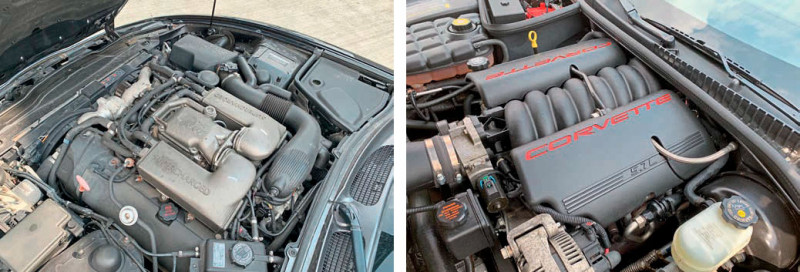
Jaguar’s all new V8 was state of the art, whereas the Corvette made do with an update of the classic pushrod small block.


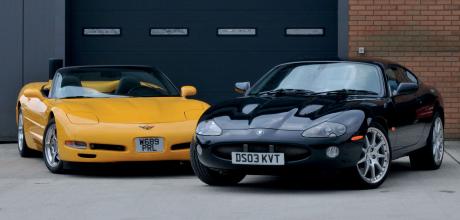
US Jaguars
According to Google Jaguar sales continue to historically be within a couple of thousand cars year over year between the US and UK and even though it’s a British marque I think your mag would do well to devote a section every issue or possibly one or two complete issues a year to what’s going on in the US market and possibly special adverts for parts and services in the colonies. Currently I don’t see one single service or parts provider based here less SNG Barrett’s US outlet. After all it does say Jaguar World.